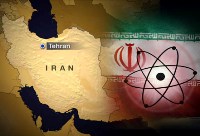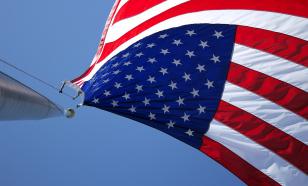Iran expands nuclear program
Iran announced that it has begun enriching uranium with 3,000 centrifuges, that means expanding a program that the United Nations has demanded it halt.

President Mahmoud Ahmadinejad said at a ceremony at the enrichment facility at Natanz that Iran was now capable of enriching nuclear fuel "on an industrial scale."
Asked if Iran has begun injecting uranium gas into 3,000 centrifuges for enrichment, top nuclear negotiator Ali Larijani replied, "Yes." He did not elaborate, but it was the first confirmation that Iran had installed the larger set of centrifuges after months of saying it intends to do so. Until now, Iran was only known to have 328 centrifuges operating.
Uranium enrichment can produce fuel for a nuclear reactor or the material for a nuclear warhead. The United States and its allies accuse Iran of intending to produce weapons, a charge Tehran denies.
The Vienna-based International Atomic Energy Agency, the U.N. nuclear watchdog, had no immediate comment on Monday's announcement.
The expansion of enrichment was a strong show of defiance toward the United Nations, which has vowed to ratchet up sanctions as long as Iran refuses to suspend the process. The Security Council first imposed limited sanctions in December, then increased them slightly last month and has set a new deadline of late May for Tehran to stop enrichment.
Tensions are also high between Iran and the West following the 13-day detention of 15 British sailors by Iran. The sailors, who were seized by Revolutionary Guards off the Iraqi coast, were released on Wednesday, but since then have said they were put under psychological pressure by their captors to force them to "confess" to being in Iranian waters when captured, angering many in Britain.
In his speech, Ahmadinejad said the door to negotiations with the West remains open. "Iran welcomes any suggestion and dialogue to resolve the issues," he said.
He insisted Iran has been cooperative with the U.N. nuclear watchdog, allowing it inspections of its facilities, but he warned, "Don't do something that will make this great nation reconsider its policies" in a reference to the threat of increased U.N. sanctions.
"With great honor, I declare that as of today our dear country has joined the nuclear club of nations and can produce nuclear fuel on an industrial scale," Ahmadinejad said.
Larijani, said his country was willing to offer assurances that its program is peaceful. But he said the West must accept its nuclear program as a fact.
"We are ready to reach understanding with the Westerners through a corridor of real negotiations _ in the current situation, in which Iran's nuclear activities have been concluded," state television quoted Larijani as saying.
"The understanding regards assuring the other party about the peacefulness of Iran's nuclear activities," he said. "But we do not give in our rights."
On April 9, 2006, Iran announced it had first enriched uranium using an array of 164 centrifuges.
Across Iran, school bells rang on Monday to mark the "national day of nuclear energy." The government sent out SMS messages of congratulations for the occasion to millions of mobile phone users.
In Tehran, some 200 students formed a human chain at Iran's Atomic Energy Organization while chanting "death to America" and "death to Britain." The students burnt flags of the U.S. and Britain.
Iran has said its next step is to set up 3,000 centrifuges, but it is not clear where the project stands. In mid-January, the hard-line president had been expected to announce that installation of the 3,000 had begun, but he did not. Instead, Ahmadinejad said Iran will gradually announce its successes step by step.
Experts say the Natanz plant needs between 50,000 to 60,000 centrifuges to consistently produce fuel for a reactor or build a warhead.
In the enrichment process, uranium gas is pumped into a "cascade" of thousands of centrifuges, which spin the gas at supersonic speeds to purify it. Uranium enriched to a low level, at least 3 percent, can be used as fuel, while at a far higher level, more than 90 percent, it can be used to build a weapon.
Iran currently has two cascades of 164 centrifuges each operating at an aboveground portion of the Natanz facility in central Iran. The two cascades have produced small quantities of non-weapons grade enriched uranium, U.N. nuclear inspectors have said.
Two smaller assemblies are known to have been set up in a heavily protected underground portion of Natanz, and have been going through "dry testing" _ without gas _ since November, according to inspectors.
Subscribe to Pravda.Ru Telegram channel, Facebook, RSS!


